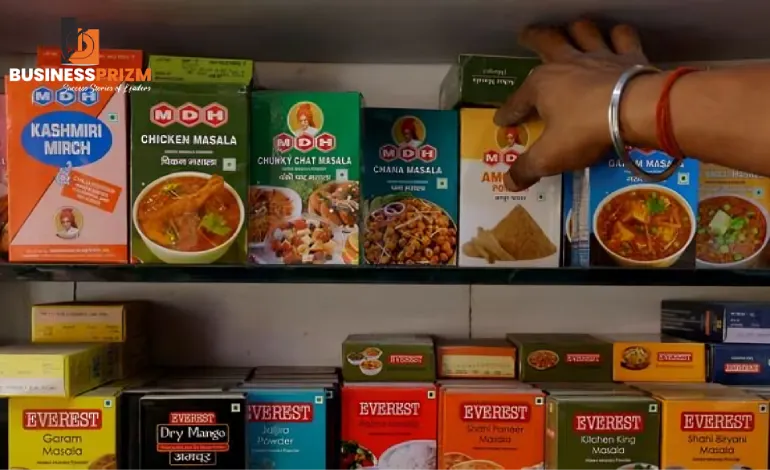In a recent development, the Indian government has taken decisive action against two prominent spice-exporting companies: Everest and MDH. The issue at hand revolves around elevated levels of ethylene oxide, a cancer-causing chemical, found in their products exported to Singapore and Hong Kong
The Contamination Crisis
1. The Unsettling Discovery
Certain batches of Everest and MDH products were flagged for violating rules related to ethylene oxide residue. This discovery led to recalls and bans in the Singaporean and Hong Kong markets. While Hong Kong completely prohibits ethylene oxide in food products, Singapore has set a limit of 50 parts per million.
2. Ethylene Oxide: A Double-Edged Sword
Ethylene oxide is commonly used to sterilize spices, but it can pose health risks, including cancer, if the residue exceeds safe levels. The challenge lies in the lack of global standardization for ethylene oxide limits and testing norms. Each country sets its own permissible levels, complicating matters for exporters.
3. The Indian Response
The Spices Board of India, the nodal agency for spice exports, has stepped in to address this critical issue. They recently mandated ethylene oxide testing for all spices exported to Hong Kong and Singapore. The goal is to ensure that Indian spices meet diverse international standards, safeguarding consumer health and maintaining market access.
4. Industry Consultations and Compliance
The government has conducted three consultations with the spice industry, emphasizing the importance of full compliance with maximum permissible limits. These consultations serve as a bridge between industry practices and international standards. While global norms remain elusive, India’s standards are improving. The failure rate of Indian spices (0.2%) is significantly lower than the international average (0.73% rejection rate of food consignments entering India).
The Way Forward
1. Stringent Testing and Quality Assurance
The focus must remain on rigorous testing and quality assurance. Ethylene oxide testing ensures that Indian spices adhere to safety standards across borders. As the industry aligns with international practices, consumer trust and confidence will strengthen.
2. Harmonizing Global Standards
While no single global standard exists, efforts should continue to harmonize ethylene oxide limits and testing protocols. Collaboration among nations, industry stakeholders, and regulatory bodies is essential to protect public health.
3. Transparency and Accountability
Companies like Everest and MDH must demonstrate transparency and accountability. Swift corrective measures, adherence to safety guidelines, and responsible practices are crucial to regain consumer trust.
In conclusion, the ethylene oxide contamination issue serves as a wake-up call for the spice industry. As India’s spice exports continue to thrive, safeguarding quality and safety remains paramount. Let us hope that stringent measures and collective efforts pave the way for a healthier and safer spice trade globally.
The Indian government’s action against Everest and MDH highlights the importance of quality control and safety in the spice industry. Ethylene oxide contamination underscores the need for standardized testing and vigilant compliance.










